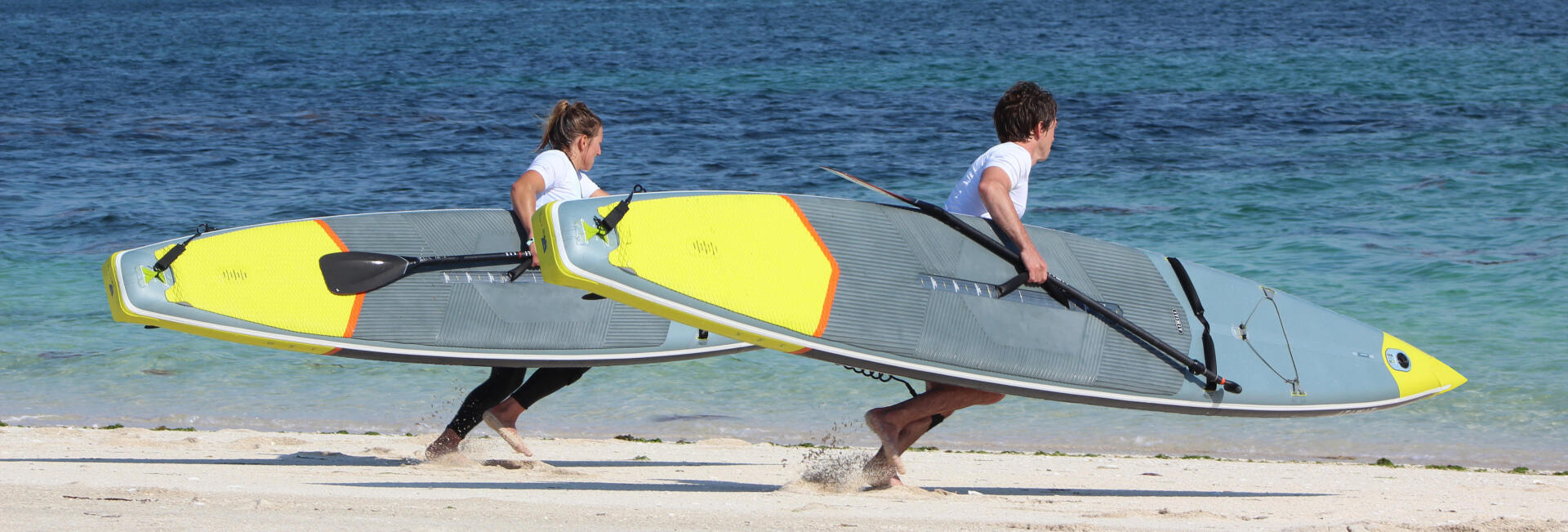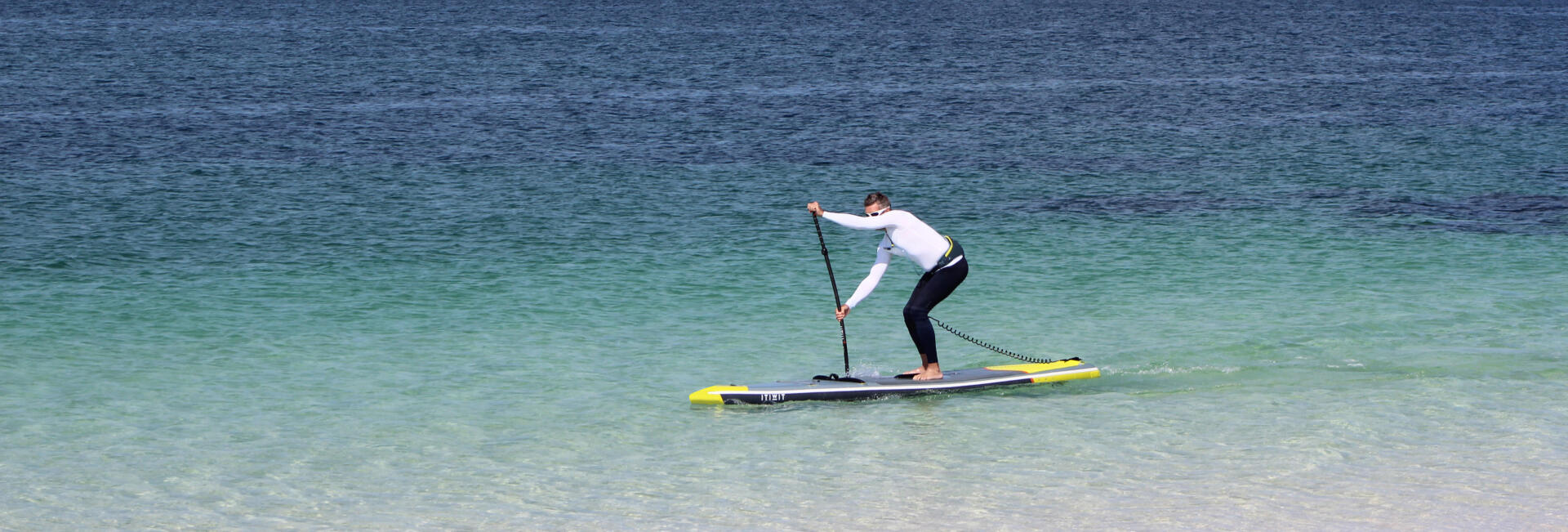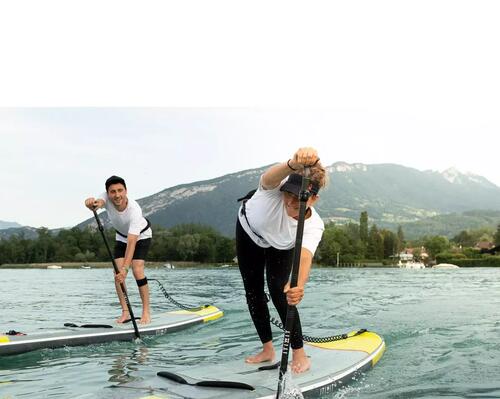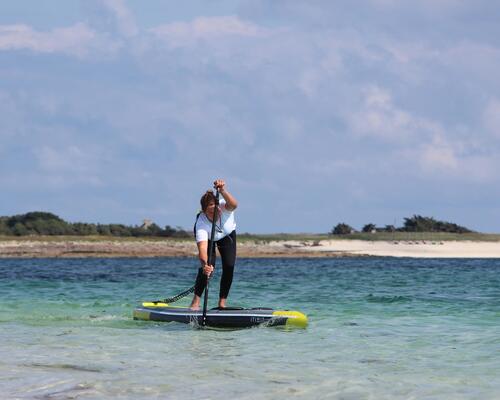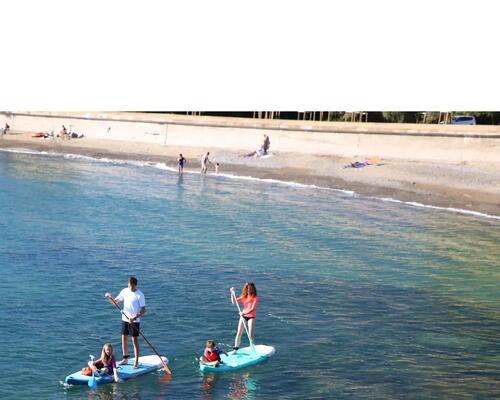#1 Master the beach race
This is the first key moment that will allow you to get ahead on a smooth water surface, rather than behind the others, caught in their wake.
- Hold your paddleboard by the central handle and a side handle.
- Run as fast as you can, lifting your knees to cover the largest distance possible without the water slowing you down too much.
- As soon as the water level gets too high, jump to get both feet on your board simultaneously.
- Position your feet near the carry handle, to stay stable and keep the board balanced
- Adopt a low grip, with your hands underneath the handle to paddle with the maximum frequency
- Open your hips, moving back the foot on your paddling side, to generate more power
You're on your way to the first buoy turn.

